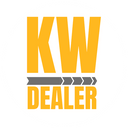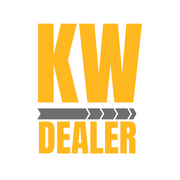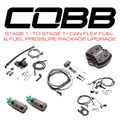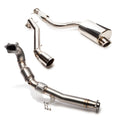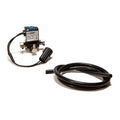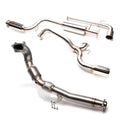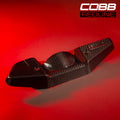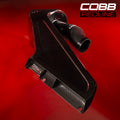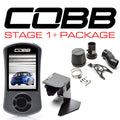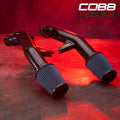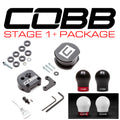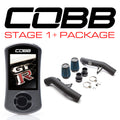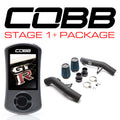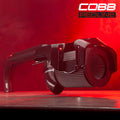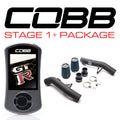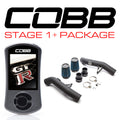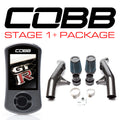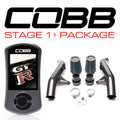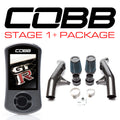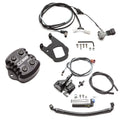TUNING CHECKLIST
We have provided the tuning checklist below to assist you in making sure your vehicle is mechanically healthy. This is a important step in the tuning process as any vehicle mechanical issues can cost you time and money and potentially an unexpected repair bill. If you deem your car is healthy and has been booked in for a dyno tune and the vehicle has issues extra costs can be incurred because of the effort to strap and remove the car from the dyno.
We have decided to not re-invent the wheel and have provided and excellent checklist created by the guys over at COBB tuning. The original link can be found HERE
Introduction
We have created this dyno tuning checklist as a guide for you to follow to ensure your engine and vehicle are in proper condition prior to your tuning session. The most common cause of unsatisfactory tuning results stem from mechanical issues that could have easily been found and corrected prior to the tune. You can go through each of the steps in this Dyno Tuning Checklist to identify and resolve common problem areas that can effect the tuning of your car.
Section 1: Mechanical Engine Health
You need to make sure you are tuning a healthy engine. We suggest you complete a compression test prior to your tuning appointment (and a Cylinder Leakdown Test [CLT] if possible). Typical compression test results should be as follows (at sea level):
· 8:1-8.5:1 compression: 150-170 psi per cylinder
· 8.5:1~9.5:1 compression: 170-210 psi per cylinder
· 9.5:1~11:1 compression: 210-275 psi per cylinder
· 11:1+ compression: 250+ per cylinder (highly depends on cams being used)
Compression Tests should be performed on a warm engine, with the fuel injectors unplugged, and the throttle should be held fully open while testing. These pressure values will be less at higher elevations, and can be lower on engines with more mileage. YOU SHOULD NOT have more than 20psi variance between cylinders. If you have one cylinder that is showing a greater variance than 20psi then you will need to repair that mechanical problem prior to your dyno tuning appointment. The additional cylinder pressure realized after a custom tune will only exploit the existing mechanical problem causing further, and usually more severe engine failure.
A Compression Leakdown Test (CLT) can also be performed on a warm engine. YOU SHOULD NOT have a cylinder leakage of more than 7% in any cylinder. If you do, then you will need to further test to see where the air is leaking from and to; intake valve seat, exhaust valve seat, head gasket, piston rings, etc. Please know that even if either of these test results look good, you can still have an engine that has some mechanical damage and the tuner/calibrator should be able to recognize any negative symptoms and consult with you about the consequences of further tuning your engine.
Check for any engine oil, other lubrication, or fluid leaks. Be sure to use the proper turbo oil feed and return lines and that they are installed properly. Any oil/fluid leak will likely only get worse once the engine/drivetrain is warmed up while on the dyno. An engine's oil lubrication system must be properly sealed in order for dyno tuning to safely continue.
Section 2: MAF, Intake, Charge Pipe/Intercooler System, Turbo and Vacuum Line Integrity
Make sure your intake filter and MAF sensor has been properly cleaned and that the o-ring is sealing properly in the MAF housing. Cleaning your intake filter at regular intervals (according to the MFG's instructions) is always a good idea, especially before a dyno tuning session. You don't want a clogged intake filter hampering power production. With the ignition in the OFF position, unplugging the MAF sensor and spraying the sensor with brake parts cleaner can help remove any residual oils that may have collected over time. Please make sure the o-ring is in tact and seats properly when you reinstall the MAF sensor into the MAF housing.
Vacuum, pressure, or smoke check all MAF housing, intake, charge pipe/intercooler, turbo, and vacuum lines. Make sure that your intake, vacuum lines, and intercooler piping are sealed when under vacuum and sealed when pressurized like when running full boost. Pressure/smoke testing the system to as much pressure as the car is going to run is ideal. This is super critical especially if the vehicle is using a MASS AIR FLOW sensor to meter air ingestion by the engine. A vacuum leak after the MAF sensor, but prior to the turbo will make the engine run leaner. A boost leak after the turbo, but before the engine will make the engine run richer. Major leaks can usually be found while dyno tuning because the data will look incorrect, but minor leaks are very difficult to find so please pressure test these parts of your system. Making sure that you have secured all of your vacuum lines zip ties, and that your intercooler piping is secure so they do not blow off at the tuning appointment is helpful and can eliminate anything from blowing off while tuning.
Check the full exhaust system from leaks from the exhaust ports on the head to the tailpipe exit. Make sure all of the bolts are tightened, in particular, the exhaust system bolts/nuts. An exhaust leak prior to the turbo will lose power and make part throttle tuning almost impossible. Any exhaust leak in the exhaust stream prior to the WBO2 sensor can also throw off sensor accuracy.
Check the BOV to make sure it is seating and sealing properly. Make sure the blow off valve properly lubricated, seals tight, and is functioning properly. Stock BOVs may not hold sufficient pressure so please be sure to follow the specific advise for how much pressure the stock BOV holds for each platform.
Test for excessive turbo shaft play. Ensure that the turbo wheels are not spinning. Reach your fingers into the inlet side of the compressor and grasp the shaft. Attempt to move the shaft left and right, up and down. If the shaft moves appreciably in these directions, your turbo has excessive shaft play. You cannot expect a turbo to operate properly if has worn excessively, have the turbo rebuilt or buy a new one.
Section 3: General Pre-Tuning Maintenance Questions
Do you have all fluid levels where they need be? Make sure all fluid levels are up to par; this includes engine oil, anti-freeze, transmission fluid, differential/transfer case fluid, brake fluid, clutch hydraulic fluid, etc. If your engine oil and filter have been run for more than 3,000 miles, please replace the filter and your engine oil. Bleed the coolant system before you come for the appointment. If your engine has an overheating problem, DO NOT come for the appointment. Because we cannot tune a car that is overheating.
Do you have a sufficient amount of the proper quality fuel in your tank? Make sure that you have the proper fuel octane and enough fuel to complete the tune. The vehicle must also have at least a half tank of gas for the dyno tuning appointment. If you want calibrations for additional fuel qualities, please be sure to properly prepare to safely evacuate the existing fuel and to provide sufficient quantities of the new fuel for the tuning session. If you want a tune for race gas, it may be necessary to you schedule two different tuning sessions because your engine will most likely be heat soaked after the pump gas tune and will need significant time to cool off before a more aggressive race gas tune should take place.
Do you have any Check Engine Lights (CEL), Codes, or Malfunction Indicator Lamps (MIL) on? Do not schedule a tuning appointment if you a check engine light is on due to something that is mechanically wrong with the vehicle. Please have this mechanical problem diagnosed and fixed prior to your dyno tuning appointment.
When was the last time your fuel injectors were cleaned and checked for a system balance? IF YOUR VEHICLE (OR INJECTORS) IS OVER 5 YEARS OLD, we highly suggest you remove your fuel injectors and have them cleaned and calibrated by an injector cleaning facility. Since the tuner/calibrator is only metering the Lambda (Air/Fuel Ratio) from one location the assumption is that all fuel injectors are flowing the same rate. If you have one poorly flowing fuel injector, then it is possible to further damage your engine by completing a dyno tune.
Do you have sufficient electrical grounding? If your vehicle is over 5 years old or is driven in a humid oceanic environment, we suggest you clean your engine grounds and grounding attachment points. A vehicles electrical signals need to be as clean as possible so the ECM has good signals coming in and going out. The engine harness should have no exposed wires. Also, do no twist and tape wires together. Take the time to properly crimp or solder them together!
How old is your fuel filter? Stock fuel filters usually work well, but when you are flowing much more fuel through them, they can clog much faster. Please inspect and replace your fuel filter (if need be), any blockage in fuel flow to the engine will cause pre-mature fuel pump wear and can lead to engine damage if the fuel filter is clog, causing a lean burn condition. You should not have installed aftermarket (higher flowing) fuel pump(s) if you see dirt, debris, or rust in the tank. If there is rust in the tank, replace the fuel tank. You can destroy your new fuel pump if you leave junk in the fuel tank.
How old are your spark plugs? If your spark plugs (& wires, if equipped) have more than 5,000 miles on them (if they are copper plugs) or 15,000 miles on them (if they are iridium/platinum), please replace them with new ones. Be sure to gap them appropriately and to use a small amount of anti-seize when installing the new spark plugs. Bring extra spark plugs, during tuning it is possible to foul the plugs to a point where they will need to be replaced. New spark plugs are NOT included in the tuning rate. Please be sure to consult with your calibrator/tuner about the proper temperature range spark plugs that should be run in your vehicle.
Can your vehicle drive straight? Vehicle alignment and wheel balancing, the vehicle must be able to drive straight if it is to be tuned on a chassis dyno.
Can your vehicle drive onto the dyno safely under its own power? The vehicle must be streetable and the driveline and drivetrain systems must be in tact and safe, if you have any clicking CV joints then repair them prior to the tuning appointment. Be sure to inspect your wheel bearings as well. The same stresses that your vehicles sees on the street are seen on the chassis dyno, although a failure on the chassis dyno puts your vehicle and the tuner/calibrator in a very unsafe environment until the vehicle and chassis dyno come to a complete stop.
Can your vehicle stop properly in an emergency situation? Make sure you have appropriately functioning brakes on the vehicle that are suited for your power level, and that your tires have sufficient tread. We drive each vehicle we tune on the street after the dyno tune to verify proper operation. We should feel safe riding in your car after the tune.
How strong is your battery/alternator? Please make sure these items are strong and operating properly.
What would you like to accomplish with your dyno tuning session? One of the best ways to have a good dyno tuning experience is to openly communicate with your calibrator/tuner about what you would like to accomplish with the tuning sessions. Doing this several days prior to your tuning appointment is usually beneficial. Some tuning goals may not be capable of being accomplished with the current hardware on your vehicle and speaking with your calibrator/tuner will help you better understand what to expect given your hardware/fuel quality combination is a good idea.
